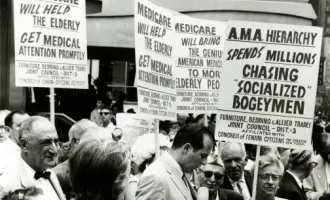Teaching Strategies to Lower Prescription Drug Costs for Under-Served Patients
In the setting of health care reform and rising health care costs, cost-containment strategies are critically important and relevant in patient care.
More than 48.6 million patients under the age of 65 years old in the United States are uninsured, and more than 29 million Americans between the ages of 19 and 64 years old are under-insured. As student pharmacists, we want to do our part to ensure that under-served patients gain access to needed medications.
Based on this gap in care of the under-served, and the pharmacy profession’s dedication to help patients gain access to medications, Drs. Helene Levens Lipton, PhD, and Marilyn Stebbins, Pharm D, of UCSF’s Department of Clinical Pharmacy, created the Peer Educator Program.
The Peer Educator Program was started seven years ago to help elderly and disabled patients and their health care providers navigate the complex Medicare Part D prescription drug benefit.
As part of this program, student pharmacists from pharmacy schools across California were trained to help seniors enroll in the most cost-effective Medicare Part D plan. Eventually, the students saw a need to disseminate the information to other health care professionals and promote inter-professional communication to improve patient care.
Today, the program has expanded its focus to providing education to medical residents, physician faculty, social workers and nurses on many practical cost-containment strategies. Major academic medical centers in Boston, New York and the San Francisco Bay Area have invited the Peer Educators to lecture at Medical Grand Rounds, medical residents’ seminars and conference meetings.
Several peer-reviewed journals have noted the impact of the lecture on learners. These studies have shown that the presentation increases learners’ knowledge of drug-cost containment strategies for the under-served, and enhances health professionals’ willingness to collaborate with pharmacists.
As the current Peer Educators, we were honored to receive invitations to lecture at three major academic medical centers in Chicago: University of Chicago, Northwestern, and Rush, this year. Our trip gave us the opportunity to both teach and learn from practicing health care professionals and health care professional students in Chicago.
While we were able to educate other health care professionals about drug cost-containment strategies, we also connected with medical residents and program directors, as well as pharmacists and health professional students.
This collaboration allowed us to share our ideas on increasing medication adherence through enhancing patient-provider communication as well as utilizing cost-containment programs.
Over the last seven years, the Peer Educator program has grown, and its impact has been felt across the nation. Our trip to Chicago was a great opportunity for us to reach across state lines and work inter-professionally.
Recently, James Town, MD, chief resident of the Department of Internal Medicine at the University of Chicago Medical Center expressed the influence our lecture had on his learners: “Many residents sent me emails, came up to me afterwards to let me know what a great talk it was and how useful they found it. We’re already seeing lots of traffic of residents downloading the slide set!! One of our general medicine case managers, Barb Powell, was in attendance and thought it was one of the best, most useful presentations she’s seen here in 15 years. She was raving about it and eager to share the information with her colleagues.”


